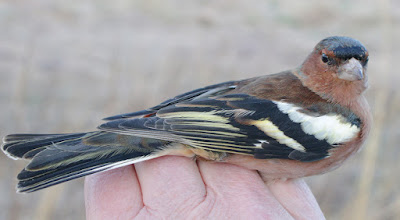Here’s wishing every one my readers a Happy, Prosperous, Optimistic and Bird Filled New Year.
The first post of 2020 concerns the common Blackbird Turdus merula.
The Blackbird is ubiquitous in these parts, so common that it rarely makes the bird headlines. On a Rarity Scale of one to ten the mundane and seemingly uninteresting Blackbird scores a resounding zero to most birders.
Since early December there have been lots of Blackbirds in my garden with an average count of 15 on any given day but now in the New Year down to a handful. But on dull, rainy days I’ve taken a closer look at the numbers together with their diverse appearance and behaviour.
Blackbird
Our Blackbird is also called Eurasian Blackbird, especially in North America. This is to distinguish it from unrelated New World icterids (e.g tanagers) and species that have “blackbird” in their title (e.g. Red-winged Blackbird, Melodious Blackbird), birds which have a superficial resemblance to the Blackbird even though they are unrelated by evolution.
Blackbird
It may not be immediately apparent why the name "blackbird", first recorded in 1486, was applied to this species and not to one of the other common black English birds, such as the Carrion Crow, Raven, Rook, or Jackdaw. In Old English, and in modern English up to about the 18th century, "bird" was used only for smaller or young birds, and larger ones such as crows were called "fowl". At that time, the Blackbird was the only widespread and conspicuous "black bird" in the British Isles. (Wiki).
Blackbird
Turdus merula breeds in Europe, Asia, and North Africa, and has a number of subspecies across its large range; a few of the Asian subspecies are sometimes considered to be full species. The Blackbird is but one member of the genus Turdus, one of about 65 species of medium to large thrushes dotted around the world. Depending on latitude, the common Blackbird may be resident, partially migratory, or fully migratory.
In the last four weeks Blackbirds, resident, migratory or maybe even fully migratory cleaned me out of apples, not a six-pack from Tesco, but dozens and dozens of windfalls left in the garden since September.
During early September we, the family and neighbours took our fill of this year’s bumper crop of Granny Smiths until apple crumble, apple pie, apple charlotte, baked apple, apple cake and fried apples came out of our ears. Just along Grange Lane our friend Stinky the Pig welcomed a few bags of slightly bruised apples and grunted in delight at our generosity.
Stinky
Blackbirds eat apples and many types of soft fruit. I know from experience that they like blackberries, raspberries, blackcurrants, strawberries, cherries grapes, plums, damsons and even kiwi fruit. They don’t seem keen on pineapple - very wise; neither do I - more so when it defaces a crusty pizza.
Blackbird
Blackbird
In Australia where the Blackbird was introduced in the 19th century it is now considered a pest because it damages a variety of soft fruits in orchards, parks and gardens including berries, cherries, stone fruit and grapes.
Meanwhile and by the middle of September when we left for a Greek holiday all the fallen apples were deliberately left for the onset of cold weather and the annual arrival of thrushes. By early December it was good to see 15/20 Blackbirds on most days, the only member of the thrush tribe, with no garden sightings of Song Thrush, Mistle Thrush, Redwing or Fieldfare. We had few days of real frost, ice or snow during that period.
Blackbird
And now in January 2020 as the apples have shrunk to morsels of apple skin and not much else, the Blackbirds have mostly left in search of other bounty.
There’s been the full range of Blackbirds. Both male and female adults, first winters of both sexes, black ones, brown ones and grey toned ones. We’ve had males & females with yellow bills, and then dark-billed Blackbirds of both sexes. Size was apparent with both large and small Blackbirds, plus some of intermediate size.
Blackbird
The large ones, especially the yellow-billed males, threw their weight around by way of chasing off the less dominant dark bills from an apple that they themselves took a liking to. I suspect these were local birds defending both an apple and their familiar winter territory.
Females have seemed less aggressive, submissive even, in allowing themselves to be chased away from an apple and content to find an alternative. Meanwhile larger females would also chase away other females and even less dominant males.
There’s no doubt that many, many dozens of Blackbirds took advantage of our apple bonanza and that a number of them were "Continental Blackbirds", winter immigrants escaping the colder temperatures of Europe.
Blackbird
Blackbird
Blackbird
Blackbird
Yep! Blackbirds are definitely worth a second look. A 1/10 if ever I saw one.
Linking today to Anni's Birding in Texas and also to Eileen's Saturday Blogging. Take a look and join in.
Linking today to Anni's Birding in Texas and also to Eileen's Saturday Blogging. Take a look and join in.












































































.jpg)











